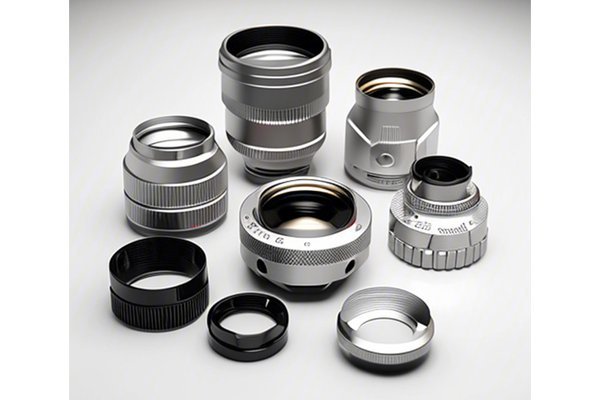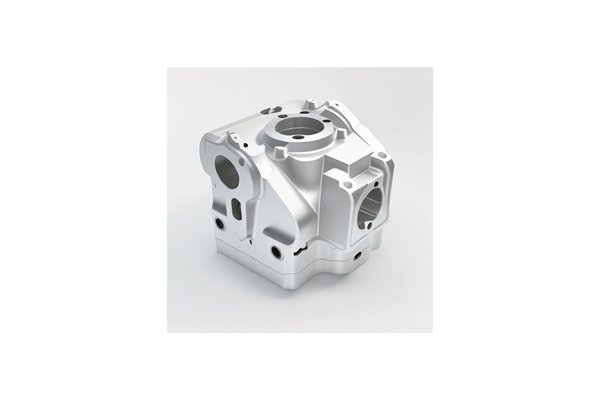Opening
Did you know that aluminum is one of the most widely used metals in modern manufacturing, accounting for a staggering 8% of the total world metal production? This lightweight but incredibly strong metal is versatile, making it a favorite among many industries including automotive, aerospace, and electronics. But what makes aluminum so special? The answer may lie in its melting point, which significantly influences how it is processed, especially in Computer Numerical Control (CNC) machining.
Understanding Melting Points
Before diving into CNC processing, it’s essential to understand the concept of melting point. The melting point of a material is the temperature at which it changes from a solid to a liquid. For aluminum, this point typically ranges between 660°C to 670°C (1,220°F to 1,238°F), depending on its alloy composition. This relatively low melting point compared to other metals like steel (which can exceed 1,450°C or 2,642°F) makes aluminum suitable for a variety of manufacturing methods but also presents unique challenges, especially when it comes to CNC processing.
The Impact of Melting Point on CNC Processing Selection
Alloy Composition: The melting point will often dictate the choice of aluminum alloy for CNC machining. Different alloys may have varying melting points. For instance, 6061 aluminum has a melting point around 650°C, while 7075 aluminum, known for its high strength, melts at approximately 480°C to 635°C. Understanding these differences is crucial when designing components that will undergo CNC machining.
Thermal Conductivity: Aluminum has excellent thermal conductivity. An aluminum alloy with a lower melting point may not only affect the machining parameters but may also lead to overheating during the cutting process. This overheating can cause deformation and ultimately results in lower precision and surface quality.
Cutting Speed and Feed Rate: Melting point influences the optimization of cutting speeds and feed rates during CNC machining. Machining aluminum typically requires higher speeds due to its ductility and lower melting point. However, when an alloy has a higher melting point, you may need to reduce the cutting speed to prevent thermal damage to the material, which can cause it to lose its structural integrity.
Coolant Use: The choice of coolant is also impacted by aluminum’s melting point. High-performance lubricants and coolants may be necessary for high-speed machining operations to ensure that temperatures remain in a safe range, thus maintaining not only the quality of the machined part but also the longevity of the cutting tools.
Material of Cutting Tools: The tool materials must withstand elevated temperatures without losing hardness or becoming dull. High-speed steel (HSS) and carbide tools are commonly used, but care must be taken to choose designs and coatings that will endure the heat generated during machining.
Tool Geometry: The geometry of the cutting tools – angle, shape, and coating – must also be adapted based on the melting point of aluminum alloys. A finely-tuned toolpath helps distribute heat evenly, preventing local overheating due to friction.
Melting Point and Heat Treatment
Understanding the melting point of aluminum is not just vital for processing; it also has implications for heat treatment. Heat treatment can improve mechanical properties – strength, ductility, and hardness – which may optimize CNC processing further.
Benefits of Heat Treatment:

Applications of Aluminum CNC Machining
The impact of melting points stretches across industry applications, influencing everything from design choices to manufacturability.
Automotive Sector
In the automotive industry, lightweight materials are critical for fuel efficiency. CNC machined aluminum parts, which take advantage of the metal’s favorable melting point, can be intricately designed to reduce weight without compromising strength.
Example Application: The engine components made from 6061 aluminum alloys leverage the balance of strength and weight reduction, achieving optimal performance and efficiency.
Aerospace Industry
The aerospace sector requires materials that can withstand extreme environments. CNC machined parts made from aluminum alloys like 7075 benefit from a favorable balance of melting point and superior strength-to-weight ratio, leading to successful designs in aircraft components.
Example Application: Fuselage and wing structures benefit from the lightweight nature of aluminum while maintaining structural integrity due to careful temperature control during CNC processing.
Electronics Manufacturing
In electronics, aluminum’s low melting point allows for high-precision machined parts that fit into tight spaces. Knowing the melting point ensures manufacturers can produce intricate components without risking thermal damage during the machining process.
Example Application: Heat sinks made from aluminum alloys can be machined with precise tolerances and surface finishes essential for thermal management in electronic devices.
The melting point of aluminum is a crucial parameter that influences the entire CNC machining process—from material selection and process parameters to tool selection and application. Understanding these elements allows manufacturers to optimize their machining operations, enhance product quality, and ultimately reduce costs.
The importance of this topic cannot be understated: as industries continue to push for efficiency, understanding the melting point becomes a vital aspect of material science, manufacturing engineering, and product development. By leveraging the properties of aluminum and its alloys, manufacturers can ensure precision, durability, and performance in their products.
As we advance into the future of manufacturing, paying attention to factors like melting points in CNC processing will remain essential. It’s not just about machining metal; it’s about mastering the science behind it to deliver superior products that meet the ever-evolving demands of various industries. This nuanced understanding of aluminum’s physical properties underscores why it remains a staple in modern manufacturing techniques and underscores the importance of continuous learning and adaptation in a fast-paced industrial landscape.
Thus, next time you consider aluminum for a project, remember that its melting point could be the key to unlocking greater potential in your CNC processing endeavors.






